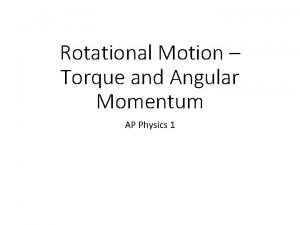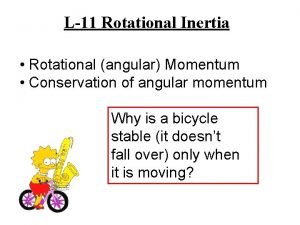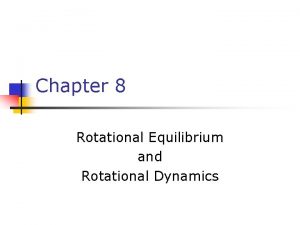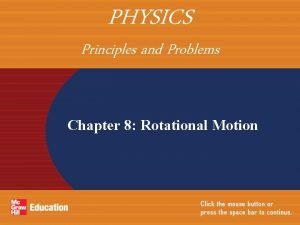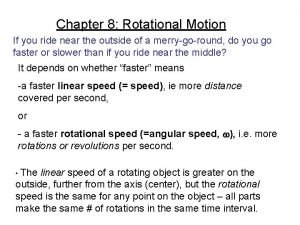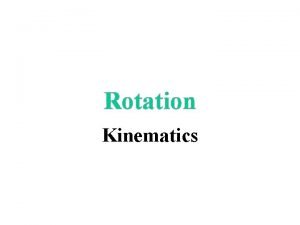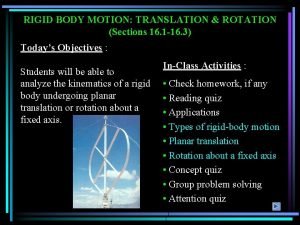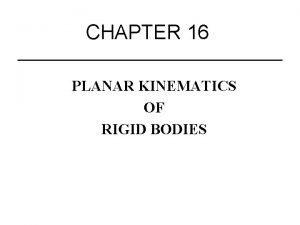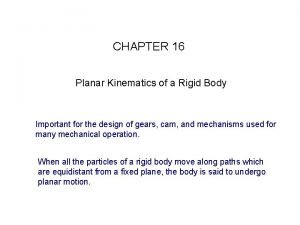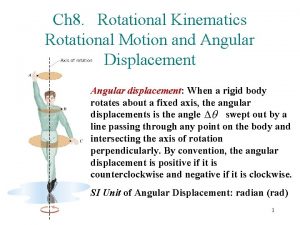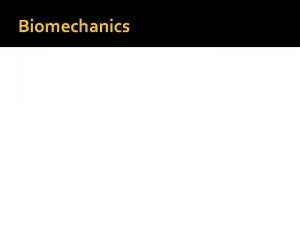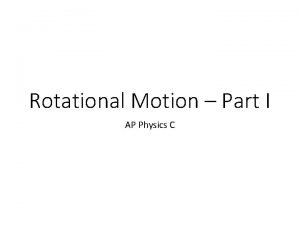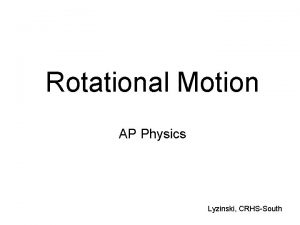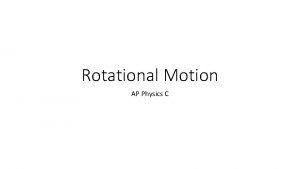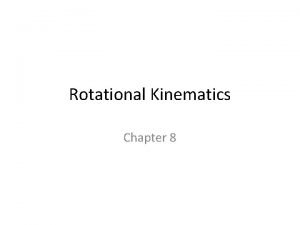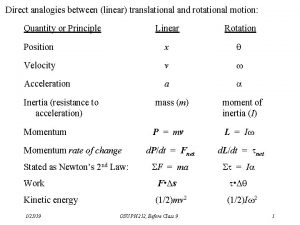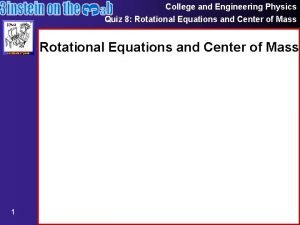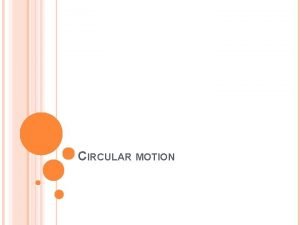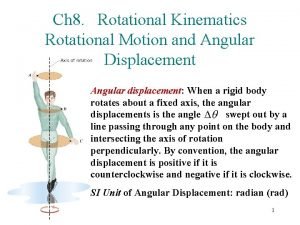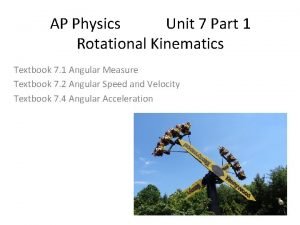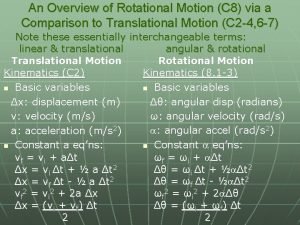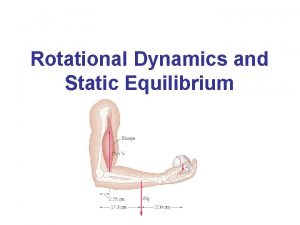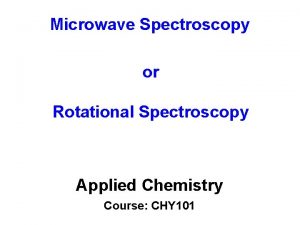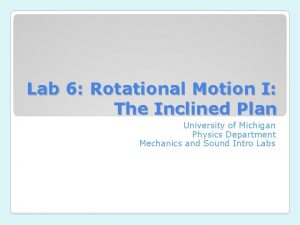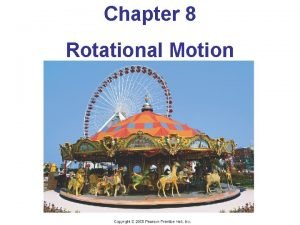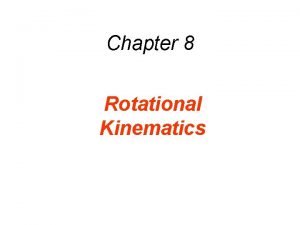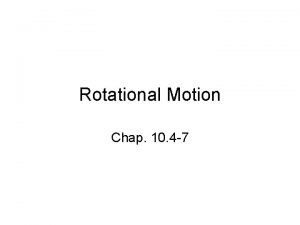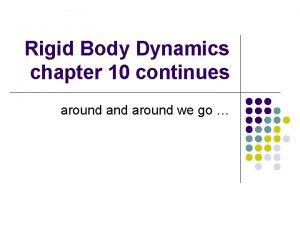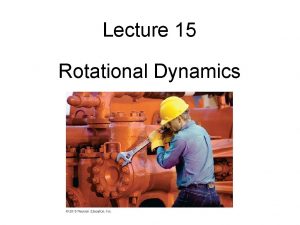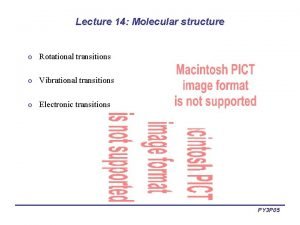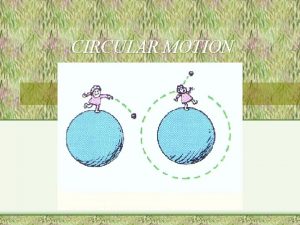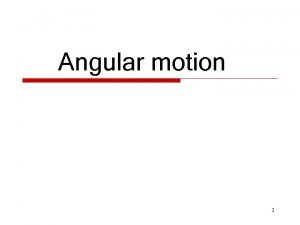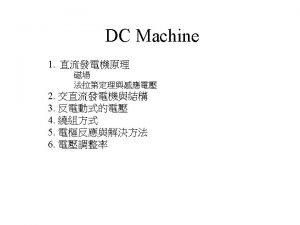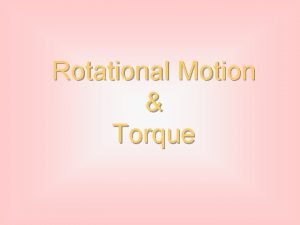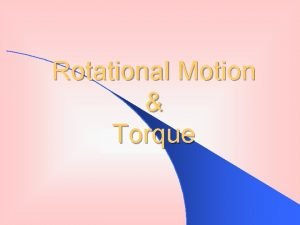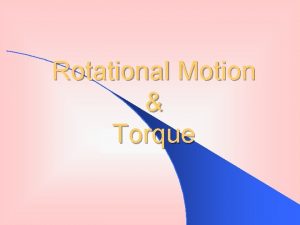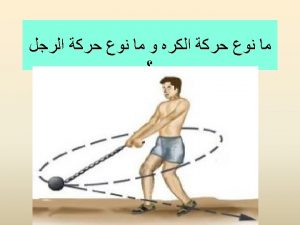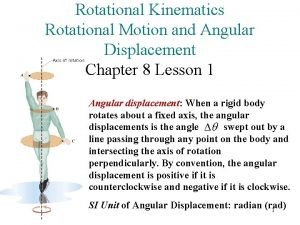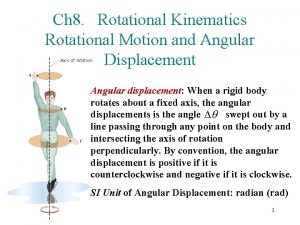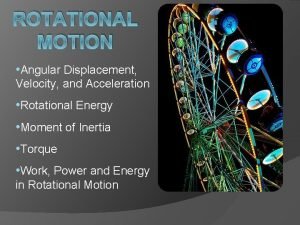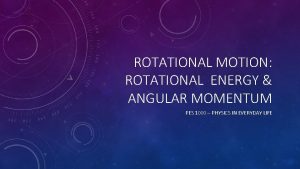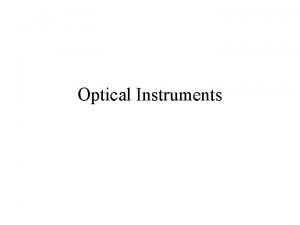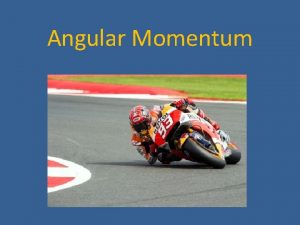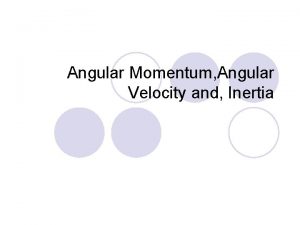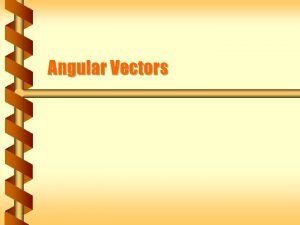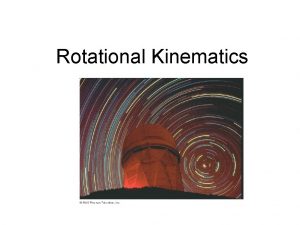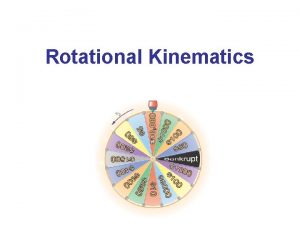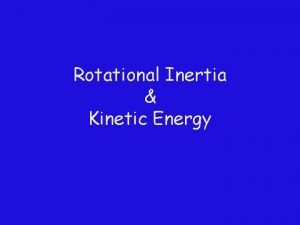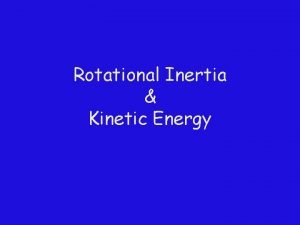Chapter 8 Rotational Motion Rotational Motion n Angular





































- Slides: 37

Chapter 8 Rotational Motion

Rotational Motion n Angular Distance (q) o Replaces distance for rotational motion o Measured in n Degrees n Radians n Revolutions q

Radian Measure r r 1 rad = 57. 3 degrees 2 p rad in one circle

Windows Calculator

Rotational Motion n Speed of Rotation (w) o w = Angle covered/Time required o o = Dq/Dt Note similarity to v = Dx/Dt o Measured in degrees/second n radians/second n revolutions/second n w

Rotational Motion v Angular Acceleration - Measures how angular velocity is changing (a) o a = Dw/Dt Note similarity to a = Dv/Dt o Measured in … degrees/s 2 n radians/s 2 n revolutions/s 2 n

Rotational Inertia n Property of an object that resists changes in rotation • For linear motion mass was a measure of inertia • For rotational motion Moment of Inertia (I) is the measure of rotational Inertia

Moments of Inertia n Depends on … o Mass of the Object o Axis of Rotation o Distribution of Mass in the Object

Moments of Inertia Standard Shapes

Moment of Inertia Bars v Ring and Disk on Incline v Metronome v People walking v Weighted Stick - Bare Stick v

Torque n Product of Force and Lever Arm o Torque = Force X Lever Arm n Examples: o Balance o See-Saw o Wrench

W 1 d 1 = W 2 d 2

Sample Torque Problem (0. 5 kg)(9. 8 m/s 2)(0. 1 m) = (0. 2 kg)(9. 8 m/s 2)d

F Line of Action Lever Arm

Torque Examples

Torque n n Just as unbalanced forces produce acceleration, unbalanced torques produce angular acceleration. Compare: SF = ma St = Ia

Center of Mass n Average position of the mass of an object o Newton showed that all of the mass of the object acts as if it is located here. o Find cm of Texas/USA

Finding the Center of Mass Line of action Pivot point Lever arm Torque weight No Torque

High Jumper

Stability n n In order to balance forces and torques, the center of mass must always be along the vertical line through the base of support. Demo • Coke bottle • Chair pick-up

Stability Base of Support

Stability n Which object is most stable?

Centripetal Force n n Any force that causes an object to move in a circle. Examples: • • • Carousel Water in a bucket Moon and Earth Coin and hanger Spin cycle

Centripetal force F = mac 2 = mv /r 2 = mrw

Centrifugal force n Fictitious center fleeing force o Felt by object in an accelerated reference frame n Examples: o Car on a circular path o Can on a string

Space Habitat (simulated gravity) w r

Space Habitat (simulated gravity) n n “Down” is away from the center The amount of “gravity” depends on how far from the center you are.

Angular Momentum L = (rotational inertia) X (angular velocity) L = Iw Compare to linear momentum: p = mv

Linear Momentum and Force Angular Momentum and Torque n Linear o Impulse n Rotational o Rotational Impulse SF = Dp/Dt Dp = SF Dt St = DL/ Dt DL = St Dt

Conservation of Momentum n Linear o If SF = 0, then p is constant. n Angular o If St = 0, then L is constant.

Conservation of Angular Momentum n n n Ice Skater Throwing a football Rifling Helicopters Precession

Rifling

Football Physics L

Helicopter Physics Rotation of Rotor Body Rotation Tail rotor used to produce thrust in opposite direction of body rotation

Precession

Age of Aquarius

Linear - Rotational Connections Linear x (m) Rotational q (rad) v (m/s) w (rad/s) a (m/s 2) a (rad/s 2) m (kg) F (N) I (kg·m 2) t (N·m) p (N·s) L (N·m·s)
 Theorem of angular momentum
Theorem of angular momentum Angular velocity and inertia
Angular velocity and inertia Rotational equilibrium and dynamics
Rotational equilibrium and dynamics Rotational equilibrium
Rotational equilibrium Chapter 8 rotational motion answer key
Chapter 8 rotational motion answer key Chapter 8 rotational motion
Chapter 8 rotational motion Linear kinematic equations
Linear kinematic equations In plane motion the rotation and translation would be
In plane motion the rotation and translation would be Centre of gravity pdhpe
Centre of gravity pdhpe Planar kinematics of a rigid body
Planar kinematics of a rigid body Curvilinear translation
Curvilinear translation Angular motion equations
Angular motion equations Angular motion kinesiology
Angular motion kinesiology Angular motion biomechanics
Angular motion biomechanics Ap physics c rotational motion
Ap physics c rotational motion Torque and moment of inertia
Torque and moment of inertia Ap physics rotational motion
Ap physics rotational motion Tangential speed
Tangential speed Rotational kinematics
Rotational kinematics Analogy between linear and rotational motion
Analogy between linear and rotational motion Torque and rotational motion quiz
Torque and rotational motion quiz Linear motion equations
Linear motion equations Symbol for angular displacement
Symbol for angular displacement Ap physics 1 unit 7
Ap physics 1 unit 7 Translational vs rotational motion
Translational vs rotational motion Difference between rotational and irrotational motion
Difference between rotational and irrotational motion Static rotational equilibrium
Static rotational equilibrium Spectra of diatomic molecules
Spectra of diatomic molecules Rotational motion lab
Rotational motion lab Rotational motion
Rotational motion Rotational motion
Rotational motion Rotational motion
Rotational motion Torque rotational motion
Torque rotational motion Why is inertia important
Why is inertia important Work done in rotational motion
Work done in rotational motion Rotational motion chemistry
Rotational motion chemistry Chapter 2 section 1 describing motion answer key
Chapter 2 section 1 describing motion answer key The main difference between speed and velocity involves
The main difference between speed and velocity involves
